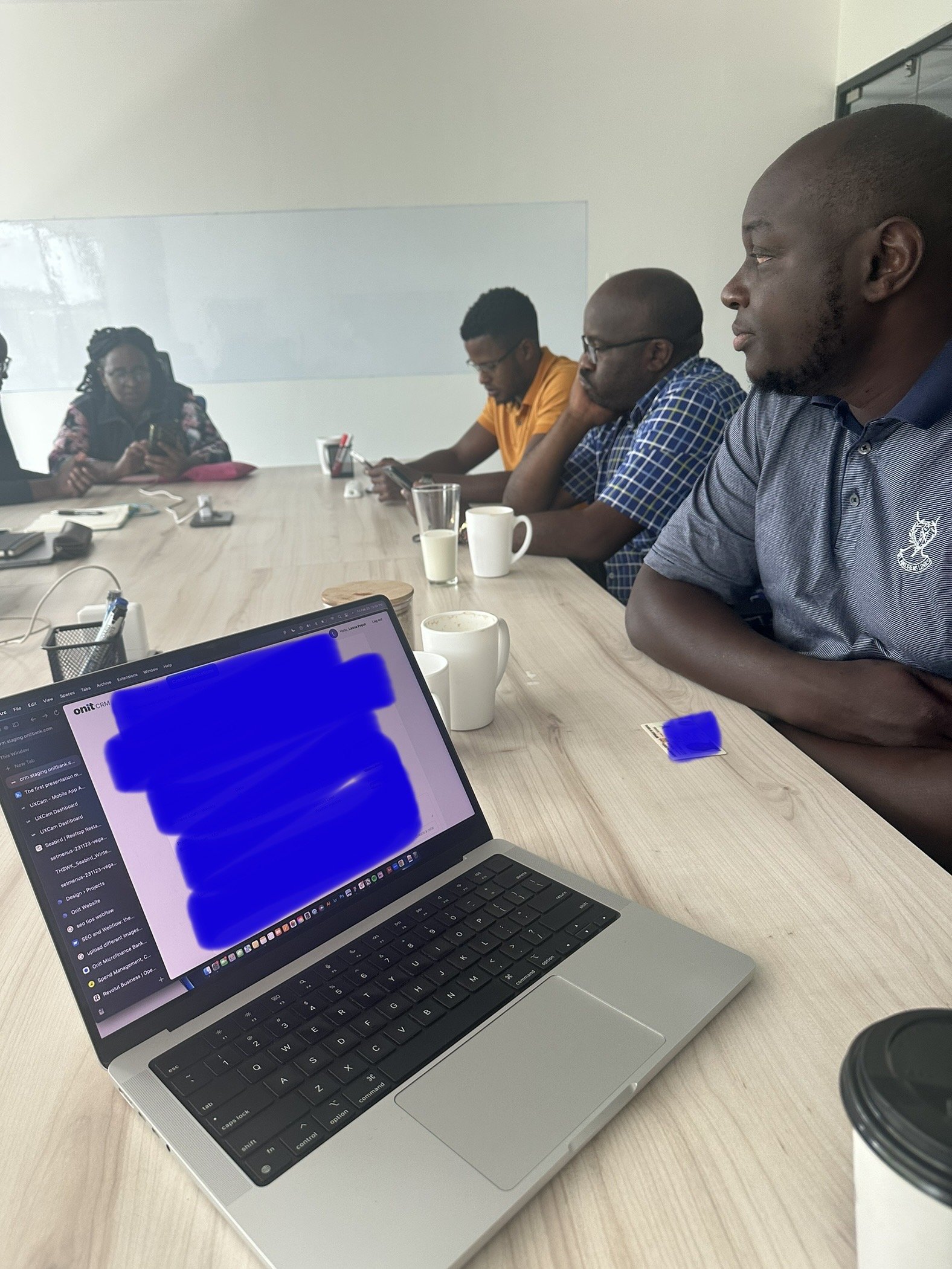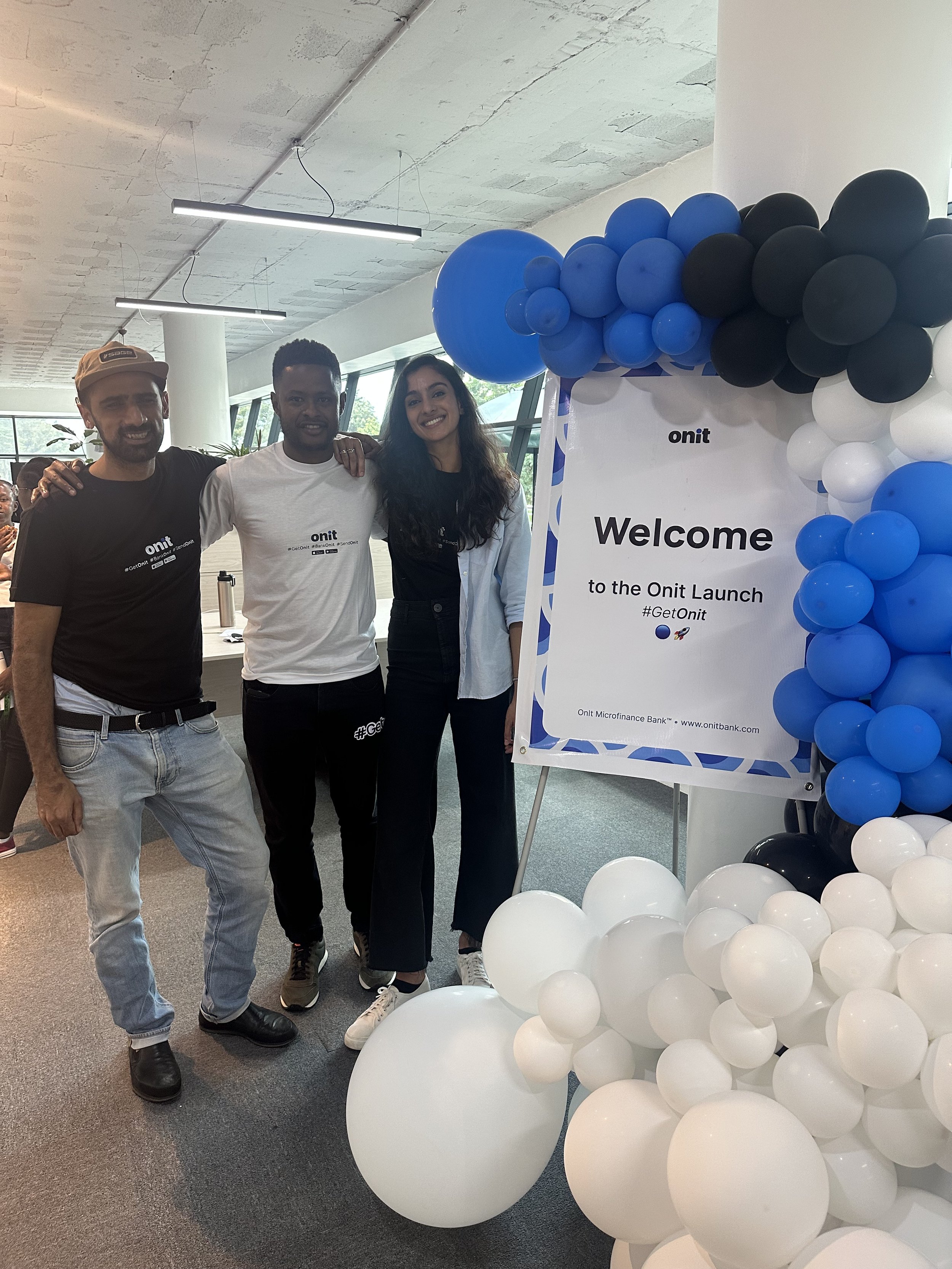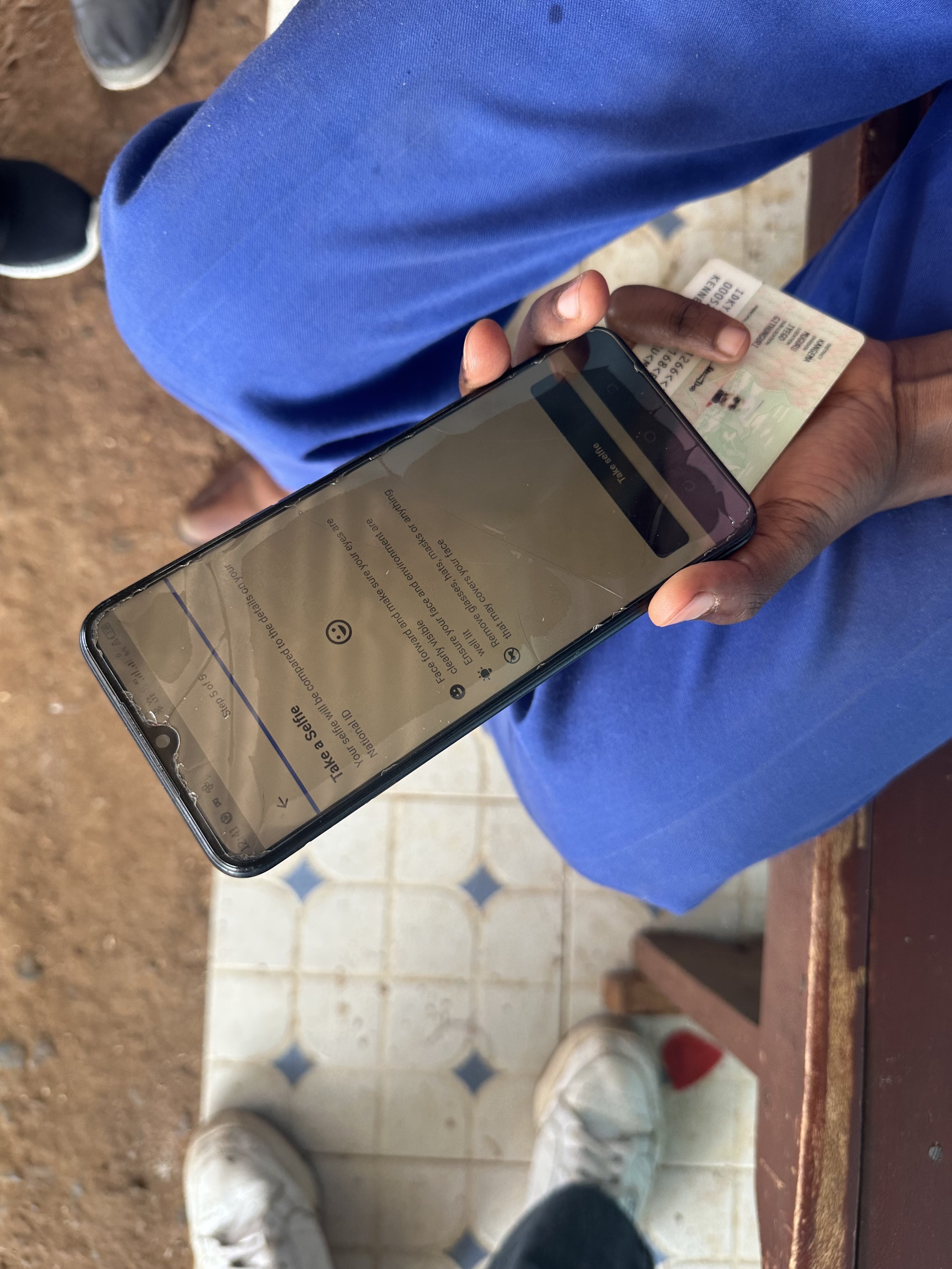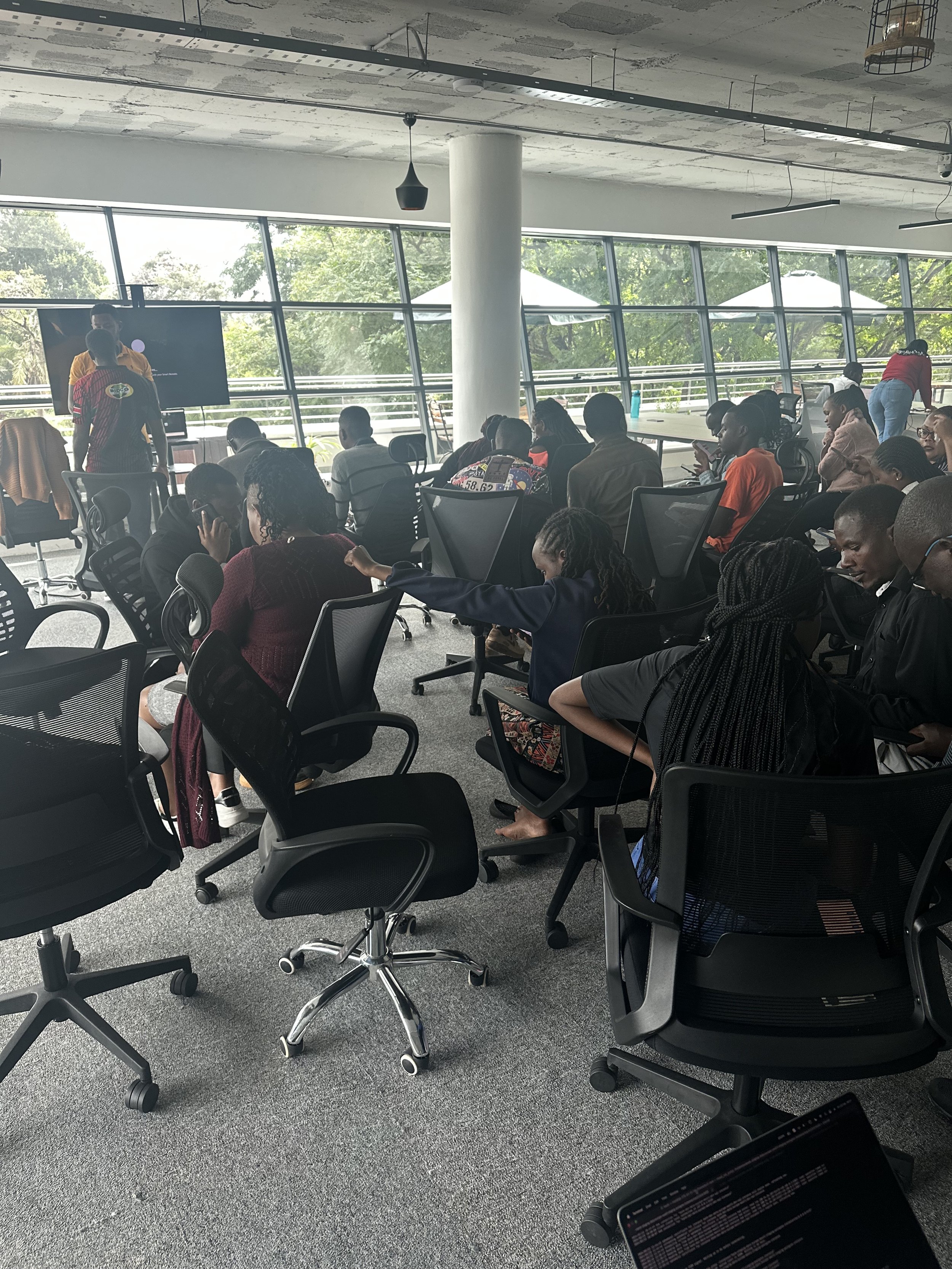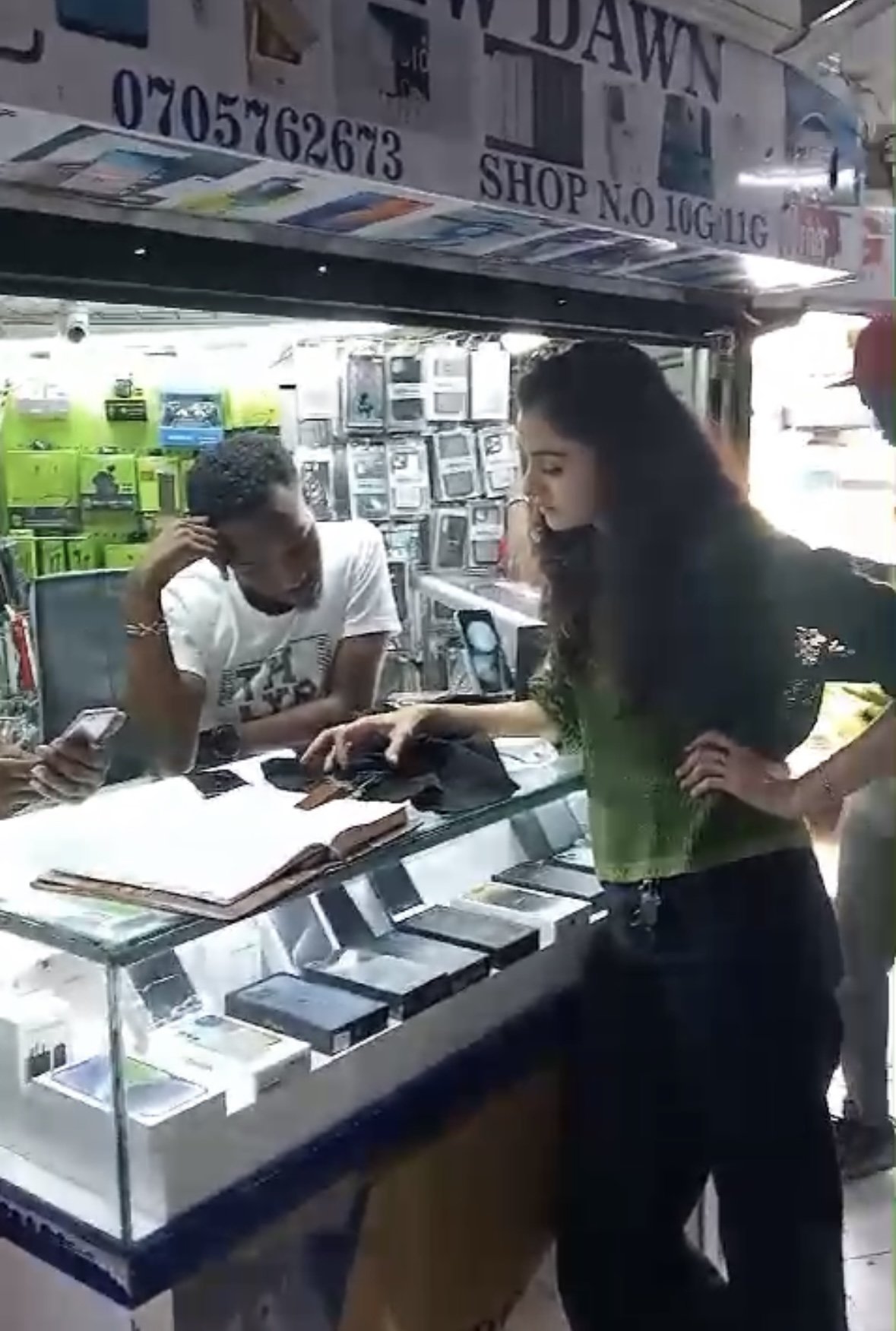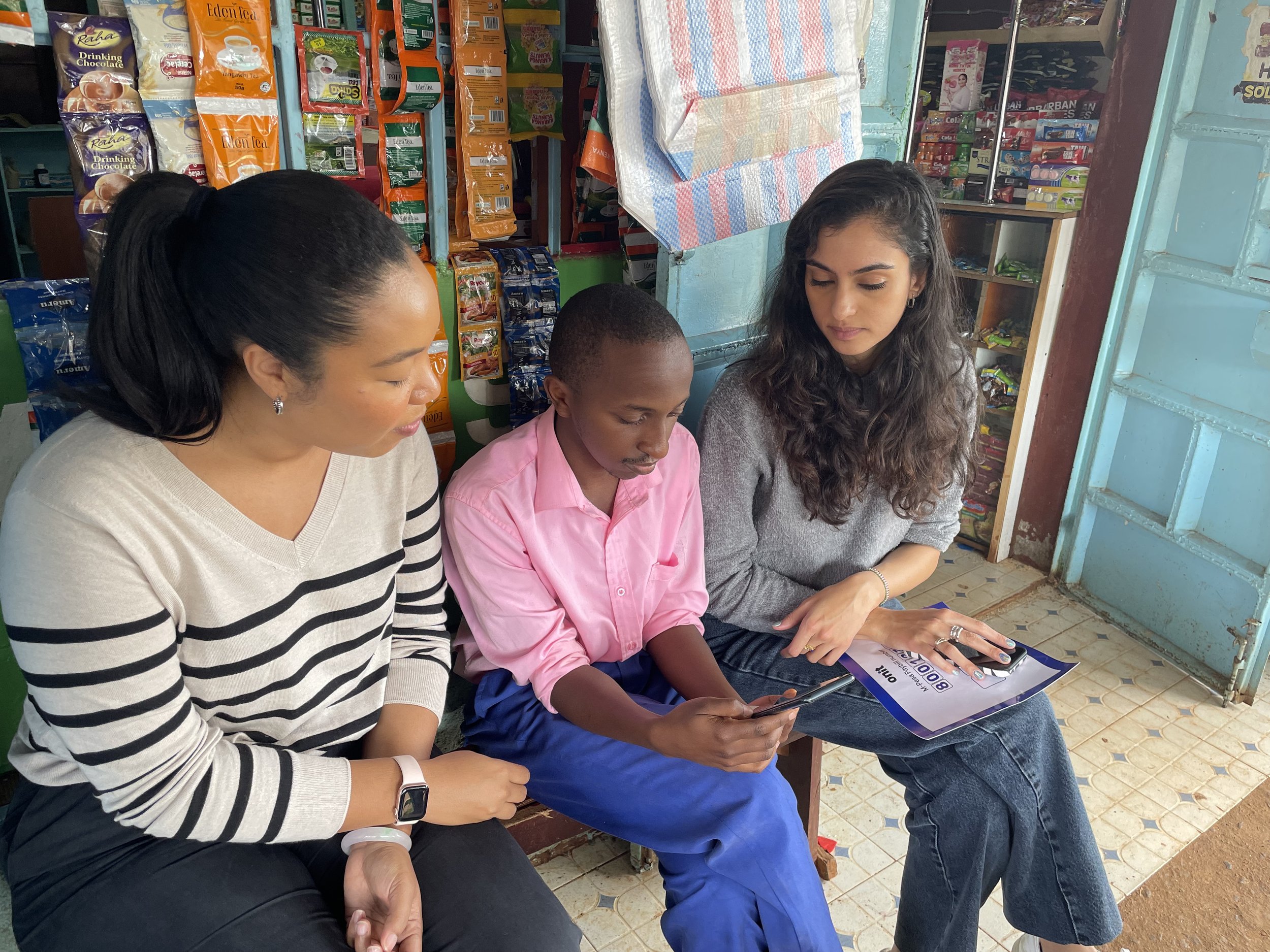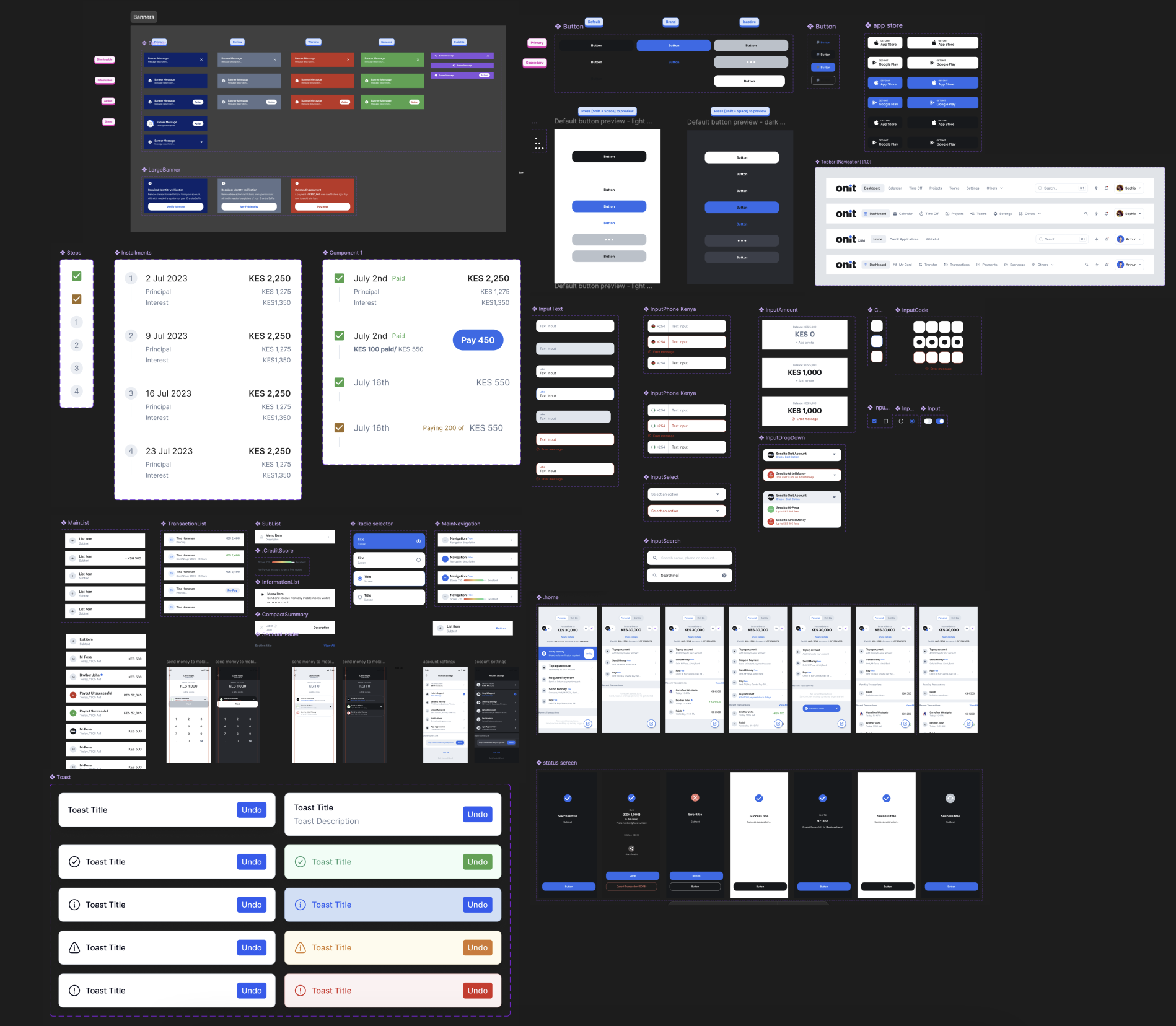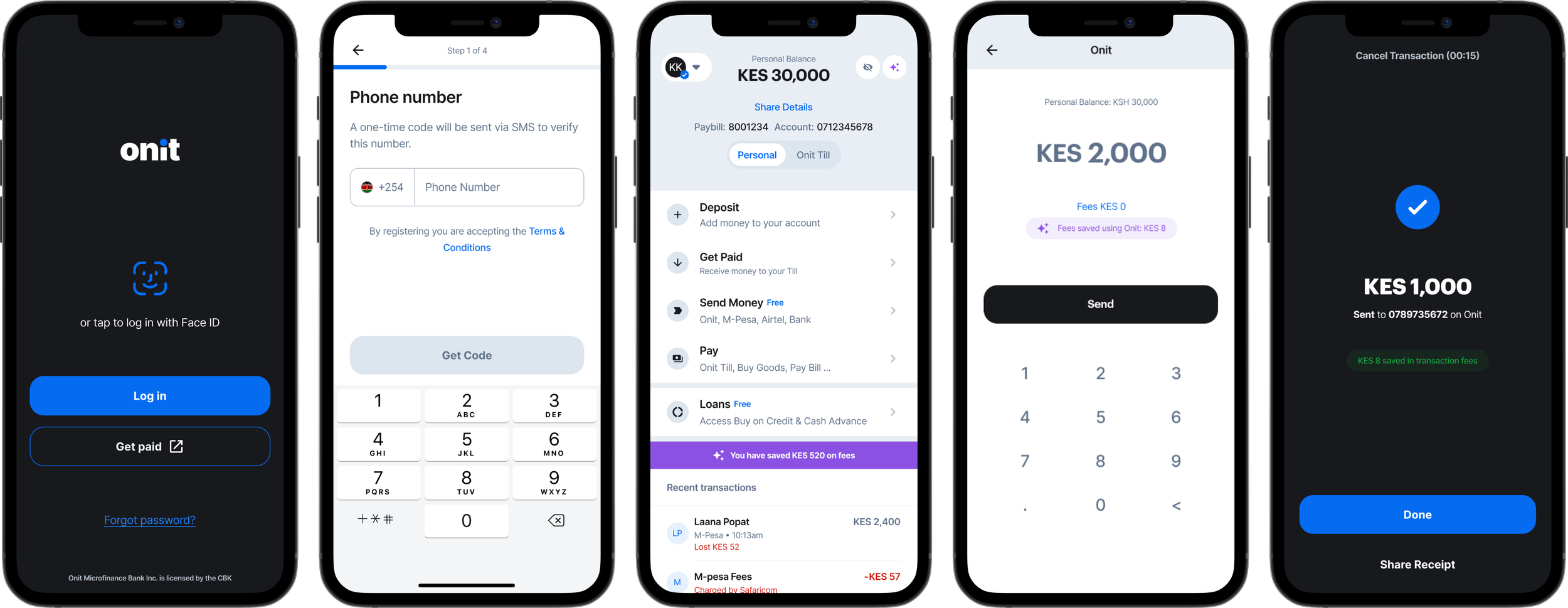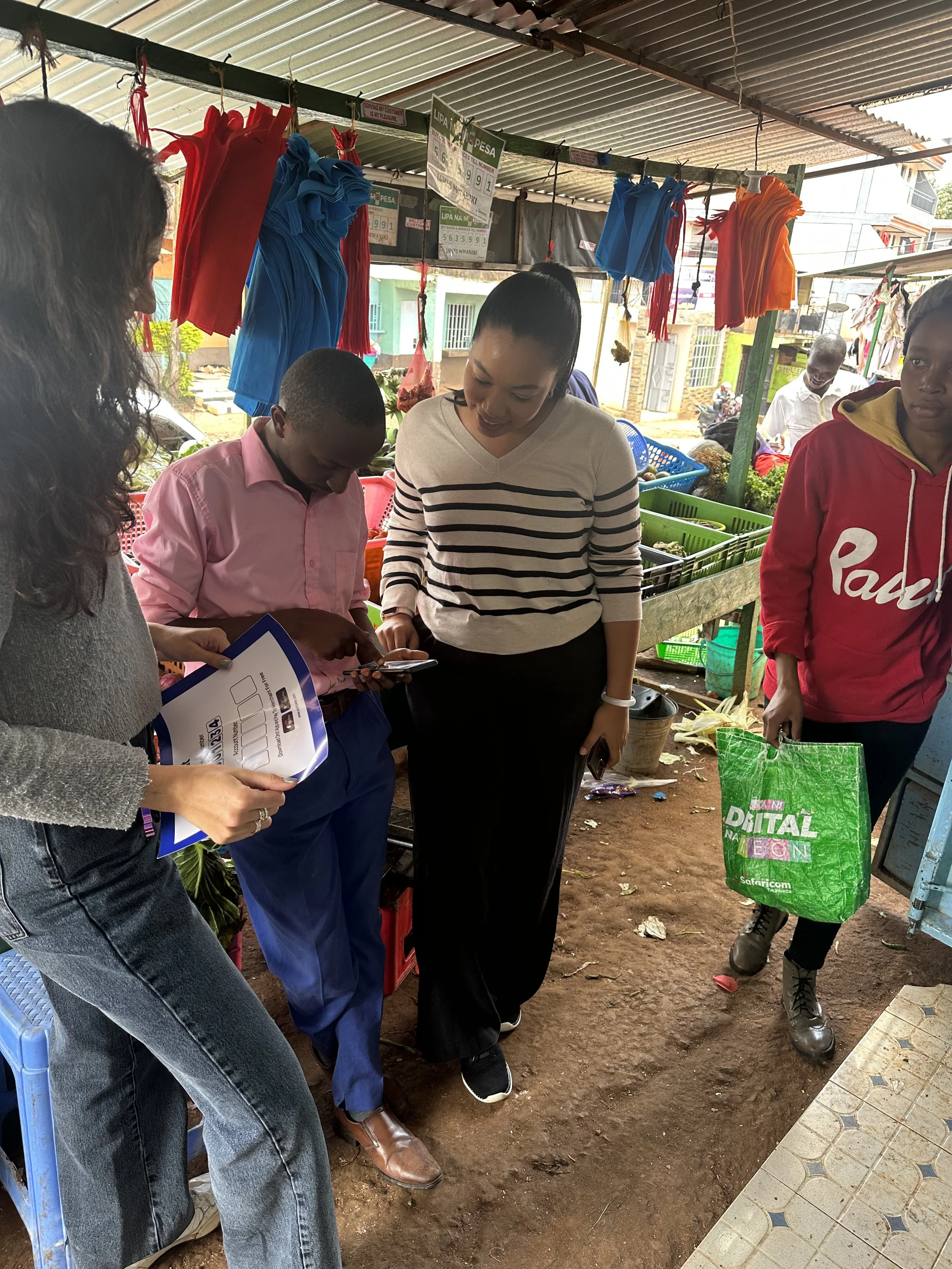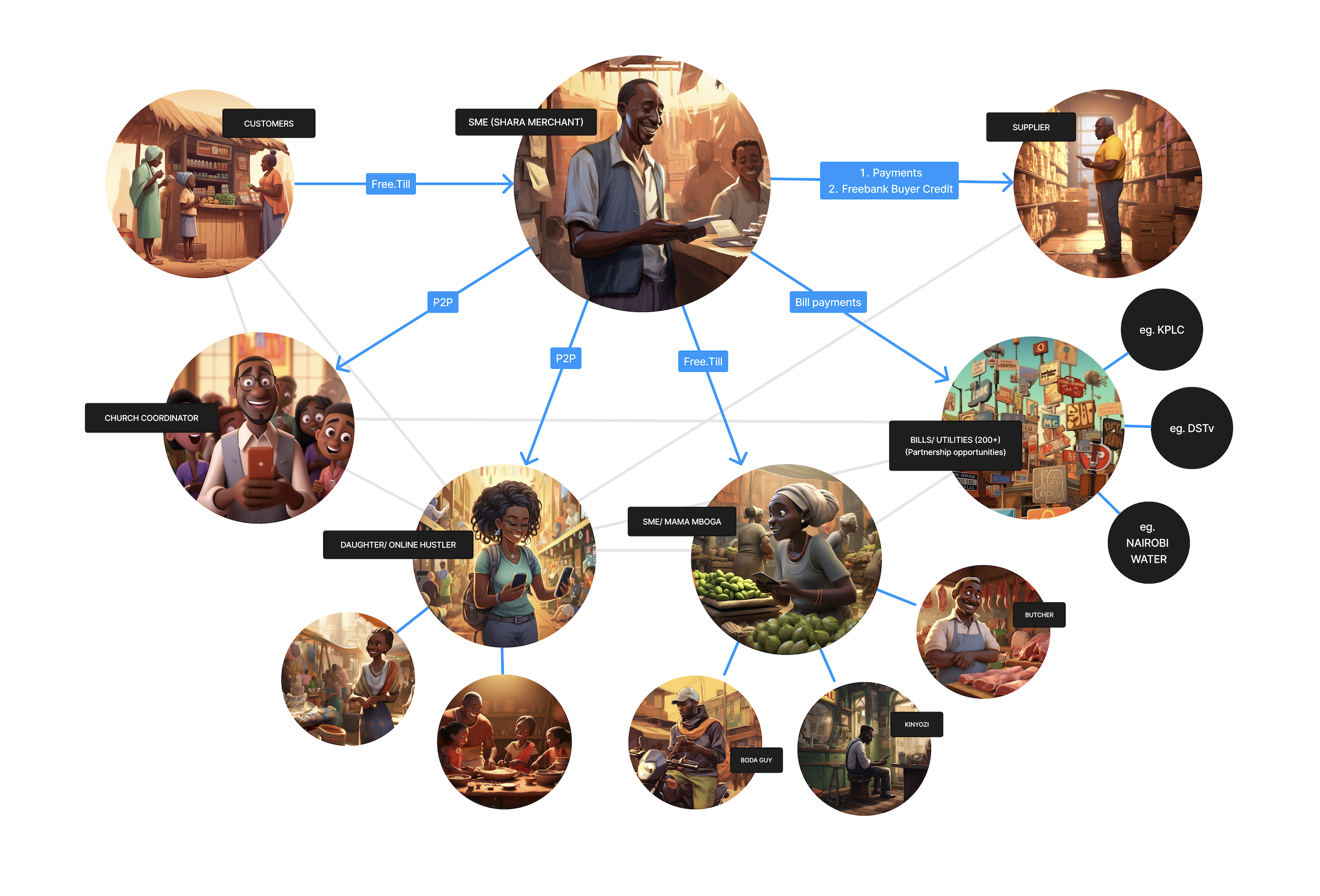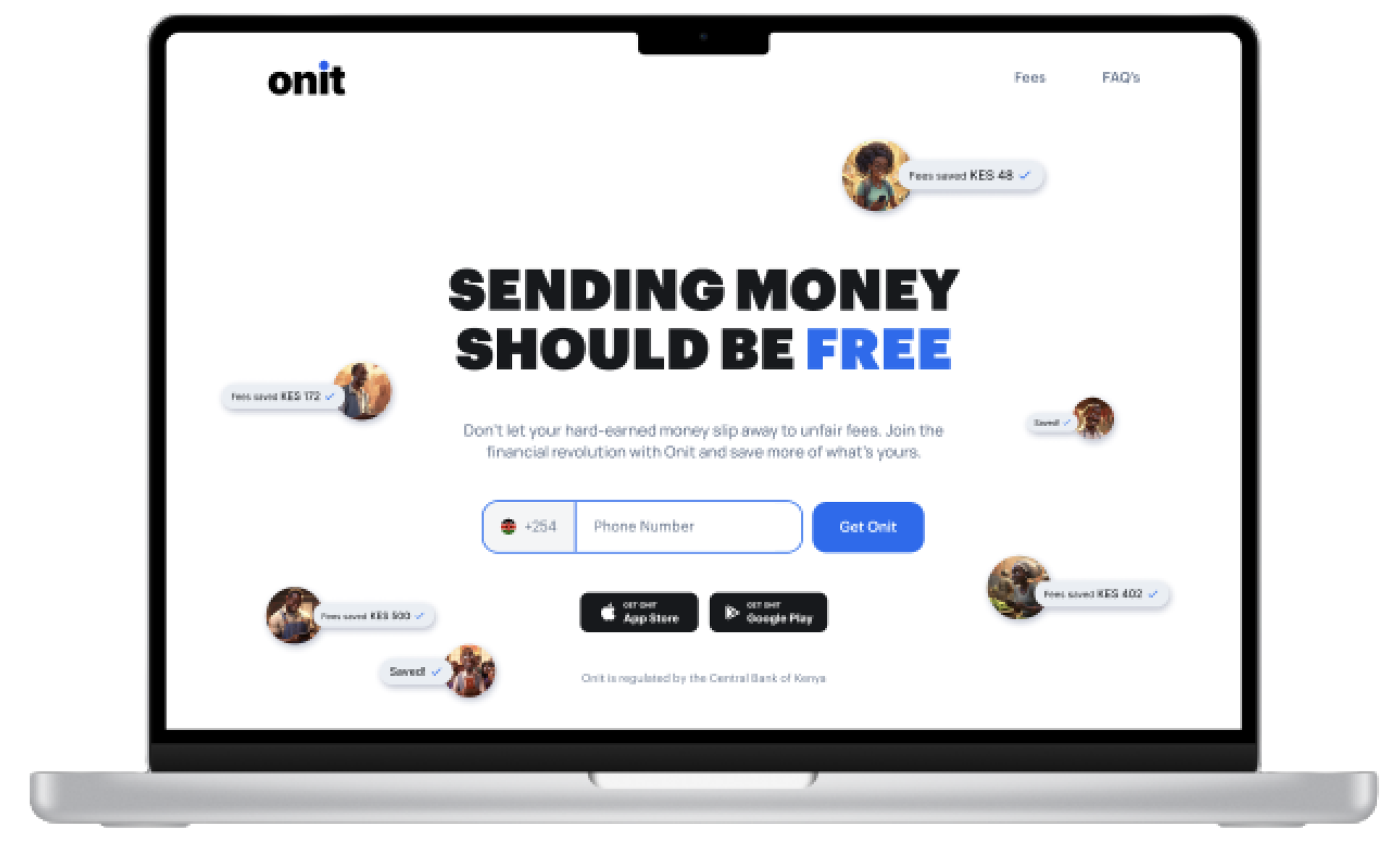Onit Microfinance Bank
REIMAGINING DIGITAL BANKING FOR KENYA'S UNDERSERVED
Onit is transforming banking in Africa by offering free, seamless transactions and financing options tailored to the needs of M/SMEs in Kenya. Our mission is to empower individuals and businesses to grow and manage their finances effectively, leveraging innovative solutions to promote financial inclusion and drive economic development through a digital-first banking ecosystem.
The Challenge
Kenya's 2.4M SMEs face a fragmented banking system: M-Pesa charges 1-3% per transaction, traditional banks require $500+ minimum balances, and account opening takes 2-3 weeks. This leaves 65% of SMEs to operate entirely in cash, losing an estimated $2B annually to inefficient payments and limited credit access.
My role: Lead Designer, Growth.
My impact: Transformed Account Opening from Days to Minutes
The Problem: Traditional bank account opening in Kenya required 2-3 weeks, physical branch visits, extensive paperwork, and significant minimum deposits.
My Approach:
Conducted contextual research with 85+ SME owners across Nairobi, Mombasa, and Kisumu
Mapped existing KYC journeys across multiple African fintech competitors (Chipper Cash, NCBA, NALA)
Designed and tested 6 prototype variations with target users in the field
The Solution:
Redesigned KYC from a 27-step, multi-day process to a 4-screen mobile flow
Created tiered verification system allowing instant basic accounts with progressive access unlocking as users verified
Designed for Kenya's regulatory requirements while minimizing user friction
Impact:
Account opening time reduced from weeks to under 2 minutes
Eliminated physical branch visits entirely
Significantly increased completion rates through simplified flow
Enabled Onit to scale from 0 to hundreds of users within ~12 months
Driving Transaction Activity Through Zero-Fee Design
The Problem: Merchant interviews revealed "fee anxiety." SMEs avoided digital transactions due to unpredictable costs and hidden charges from M-Pesa and traditional banks.
My Approach:
Interviewed 40+ merchants to understand decision-making around payment methods
Analyzed UXCam session recordings to identify drop-off points in transaction flows
Designed trust-building features addressing core anxieties around transparency
The Solution:
Created transparent, zero-fee P2P and B2B transfer experience
Designed real-time transaction notifications and instant balance updates
Built upfront cost calculator showing exact fees before confirmation
Developed clear, jargon-free messaging around Onit's fee structure
Impact:
Transaction frequency substantially exceeded industry benchmarks
Users consistently chose Onit over M-Pesa for business transactions
Drop-offs during payment flows measurably decreased after transparency features launched
Scaled Design Capacity Through Systems Thinking
The Problem: As Onit grew from lending app to full-stack digital bank, inconsistent design patterns slowed development and created fragmented a user experience.
My Approach:
Audited existing design files and identified 40+ component variations
Collaborated with engineering to understand technical constraints and optimization opportunities
Documented design rationale and decision-making processes for team knowledge sharing
The Solution:
Built Onit's first comprehensive design system with 150+ reusable components
Created detailed documentation, including usage guidelines, accessibility standards, and interaction patterns
Established design review processes and component governance
Impact:
Feature design time reduced from 6+ weeks to 2 weeks on average
Team shipped 3x more features per quarter after design system implementation
Onboarded 2 additional designers seamlessly using documented system
Maintained consistent experience across 12+ major feature launches
Design & Documentation
With our research insights in hand, we began designing Onit to address the identified challenges. Key design decisions included:
Digital KYC Process: Enabling users to open an account in under two minutes using a digital Know Your Customer (KYC) process.
Zero Transaction Fees: Allowing SMEs to collect revenues from bank transfers and mobile money providers without incurring transaction fees.
Simple Interface: Creating an intuitive, user-friendly interface for both SMEs and consumers to manage their finances effortlessly.
The design process began with competitor research to understand the merchant’s current realities and service offerings. We went through the onboarding and KYC journeys of multiple African and non-African financial apps. Chipper Cash, NCBA, NALA, and Abeg to name a few. This helped us understand the number of steps and common design patterns merchants were used to.
We tested our user journeys and developed interactive prototypes, which we tested in the field to gather feedback. These iterations helped us refine our designs based on real user input. We studied countless user flows on UXcam and held in-person design workshops with users to capture their feedback early on in the design process.
Developing a design system at this point was key to establishing a consistent design language and reusable components that would enable us to design for speed as we included new features and expanded our product offering. Documenting these design standards was crucial to maintaining coherence across the platform and allowing designers in the team to understand the decisions made along the development process.
Reduction in Support Burden Through Self-Service Design
The Problem: Credit repayment flows inherited from Shara created confusion around loan terms, due dates, and payment options - generating high support ticket volumes.
My Approach:
Analyzed top 50 support ticket categories to identify pain points
Conducted usability testing on existing repayment flows revealing critical confusion points
Researched SME cash flow patterns showing irregular income cycles
The Solution:
Redesigned loan repayment interface with clear visual hierarchy and plain-language explanations
Introduced flexible payment scheduling aligned with SME cash flow realities
Created in-app education module explaining digital banking fundamentals for first-time users
Designed proactive notifications for upcoming payments and available payment options
Impact:
Support ticket volume related to payments decreased by over 60%
Support cost per active user substantially reduced
User satisfaction with repayment experience notably improved in surveys
Key Design Decisions & Rationale
1. Offline-First Architecture
Decision: Designed transaction flows to work with intermittent connectivity
Why: Field research revealed unreliable data access in many merchant locations
How: Created queuing system allowing users to initiate transactions offline, completing when connectivity restored
Result: Substantially reduced failed payment attempts and user frustration
2. Tiered KYC Approach
Decision: Balanced regulatory compliance with user friction through progressive verification
Why: Users needed immediate access but full verification required time
How: Instant basic accounts with transaction limits, unlocking higher limits as verification completed
Result: Minimized drop-offs while maintaining regulatory compliance
3. SMS Fallback Experience
Decision: Created parallel SMS-based interface for feature phone users
Why: Not all target users had smartphones or reliable data
How: Designed USSD menu flows mirroring core app functionality
Result: Captured significant additional market segment otherwise excluded
4. Plain Language and Education
Decision: Removed financial jargon and built in-app learning
Why: Many users were first-time digital banking users
How: Rewrote all copy at 6th-grade reading level, created contextual tooltips and help modules
Result: Measurably improved task completion and reduced confusion-based support tickets
#SendOnit
#GetOnit
#SaveOnit
#SendOnit #GetOnit #SaveOnit
Testing & Iteration
Prototype Testing:
Developed and tested 15+ interactive prototypes with target users in field settings
Iterated rapidly based on real-time feedback from actual merchants
Behavioral Analysis:
Monitored UXCam session recordings weekly to identify friction points
Conducted quarterly usability testing with 10-15 users per cycle
Tracked and addressed drop-off patterns at each funnel stage
Beta Launch Learning:
Launched beta to controlled user group for real-world validation
Collected continuous feedback through in-app surveys and support channels
Made iterative improvements based on actual usage patterns vs. assumptions
Cross-Functional Collaboration:
Ran bi-weekly design workshops with PM and engineering to align on goals
Facilitated monthly retrospectives to improve team process
Collaborated closely with operations team on KYC requirements and fraud prevention
The Onit Ecosytem
We studied the broader financial ecosystem in Africa, focusing on how SMEs interact with consumers, suppliers, and financial institutions. Our findings indicated that SMEs often rely on cash transactions and informal lending networks due to the inefficiencies and high costs associated with traditional banking. We also examined how digital payment solutions and mobile money systems are being adopted and used across the region.
I created this Onit Persona diagram to explain the ecosystem’s interconnectedness to the team.
*Image created using Midjourney and FigJam
Persona Development
A crucial part of our research was developing archetypes and personas. I facilitated a persona deep dive with the Product managers, design team and members from the operations and engineering teams. By including different members of the team with insights into the customer journey at various touch points, we were able to holistically analyze the opportunities for growth and better empathize with our users, understanding their needs, frustrations, and motivations.
We used the Jobs to Be Done (JTBD) framework to structure our findings. This is one of my favorite frameworks to help identify existing, everyday jobs users are trying to accomplish, the problems they face, and how they measure success. For example, a corner shop owner’s job was to manage daily transactions efficiently, while a cash office manager’s job was to ensure timely salary disbursements.
By focusing on these jobs, we designed solutions that directly addressed the core needs of our users.
What I learned
Context is Everything: Designing for emerging markets requires deep understanding of infrastructure constraints, cultural behaviors, and economic realities. Solutions that work in developed markets often fail without significant adaptation.
Trust Must Be Designed: In markets with limited financial literacy and history of exploitation, every interaction either builds or erodes trust. Transparency isn't a feature—it's a foundation.
Systems Thinking Scales Impact: Individual feature designs create local improvements, but design systems multiply team capacity and ensure consistent experiences as products scale.
Metrics Tell Stories: While not every metric was available, connecting design decisions to user behavior and business outcomes helped stakeholders understand design's strategic value.
